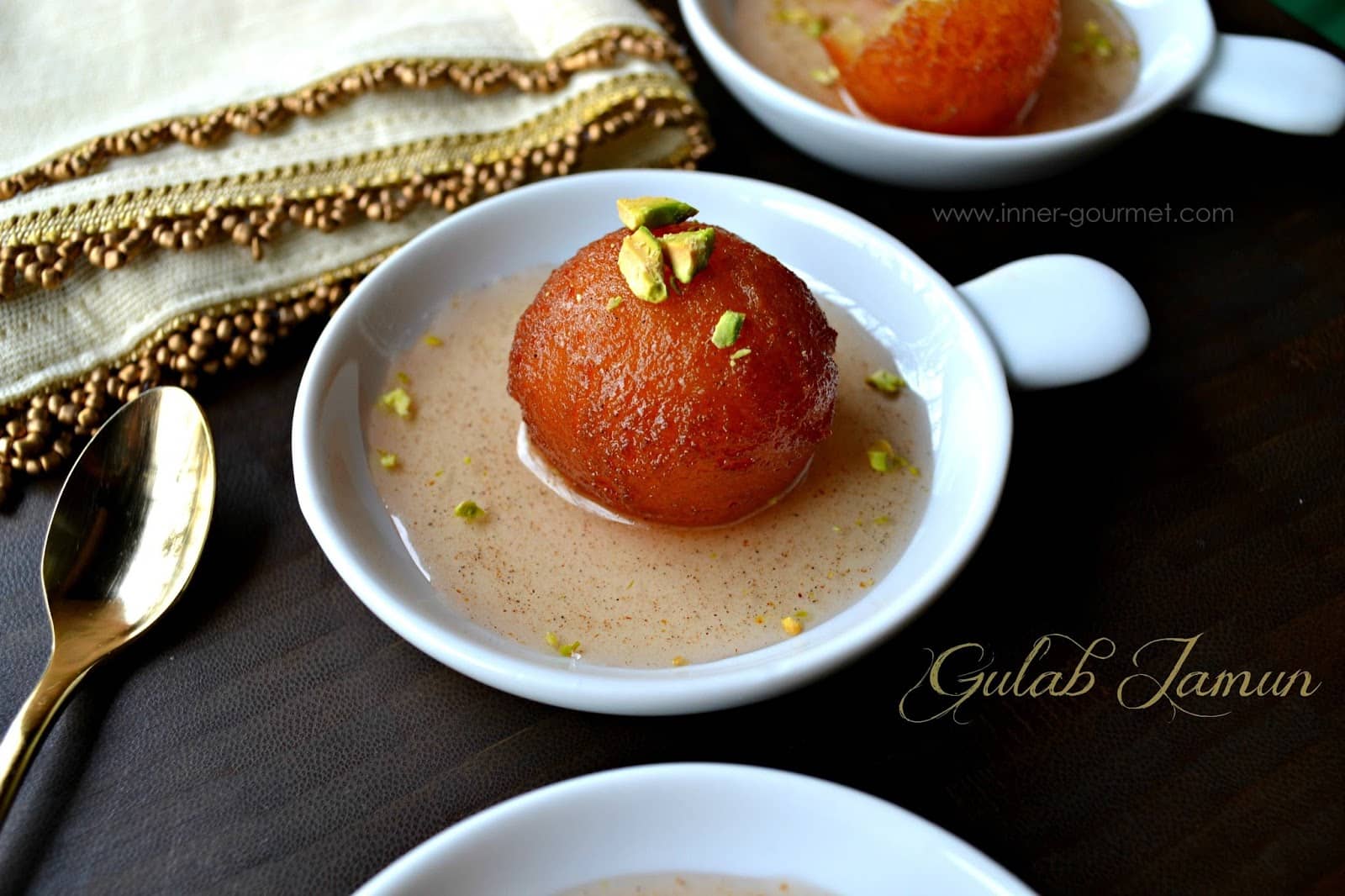
The festival of Holi or Phagwah is soon approaching and all I can do is think of the various sweets my mom would make during this exciting Hindu holiday. She would make big batches of mithai, peera, vermicelli cake, barfi, and gulgula which I would bag and share with our friends and family members later on that day.
Gulab jamun, a sweet dumpling-like dessert was one she’d make and serve to guests that came to our house on Phagwah or Diwali. It wasn’t one she’d put in the bag with the other sweets solely because of how she served it; warm and in a bowl of syrup. This yummy dessert is made by frying small balls of dough made from milk powder or freshly curdled milk solids (known as khoya). They are then soaked in an aromatic cardamom rose-scented sugar syrup and served warm or cold. Commonly found at Hindu or Muslim weddings and festivals, this sweet is insanely decadent and fitting for a special occasion. They can be overly sweet, so one or two is usually just enough for me.
Gulab jamun wasn’t a homemade sweet I grew up eating as a child, mom didn’t start making these until I was a teenager. Before then, we’d drive to Jackson Heights, Queens to buy a pound or so until they became readily available in our neighborhood. As an adolescent, I bared witness to the opening of many East Indian sweets shops in Richmond Hill. As years went on, we started to receive a variety of East Indian sweets from our friends and family on Hindu holidays such as Holi or Diwali. It was no longer just mithai, peera, parsad, barfi etc. there was gulab jamun, rasgulla, ricotta cheese pedha, and more in our bags! My absolute favorite were the gulab jamuns though.
There were two other types of jamuns that I remember liking as well, malai jamuns and kala jamuns. Malai jamuns were stuffed with a sweet cream and the kala jamuns were black (due to being fried twice) and a little stiffer than the golden brown ones I’m sharing with you today. Making these light brown gulab jamuns is part technique and part recipe.
Traditionally, gulab jamun is made with freshly curdled milk solids, known as khoya which takes quite a while to make. It starts with fresh whole milk that is boiled for a couple hours until the solids remain. You can buy khoya in any Indian/Middle Eastern ethnic grocery store if you can’t make your own, or you can use powdered milk which cuts a lot of time and also results in a very tasty gulab jamun. It’s also what most people who make this dessert at home tend to use.
You can certainly use a store-bought mix to make the jamuns, many of them result in a good end product. Most sweets shops use ready-made mixes anyhow to help keep food costs down and ensure product consistency, but if you are feeling a little courageous you can make these at home and get a great result. This is how my mom makes hers, she serves them warm, but I enjoy them cold and dense. Enjoy, and happy Holi to all of you who are celebrating!
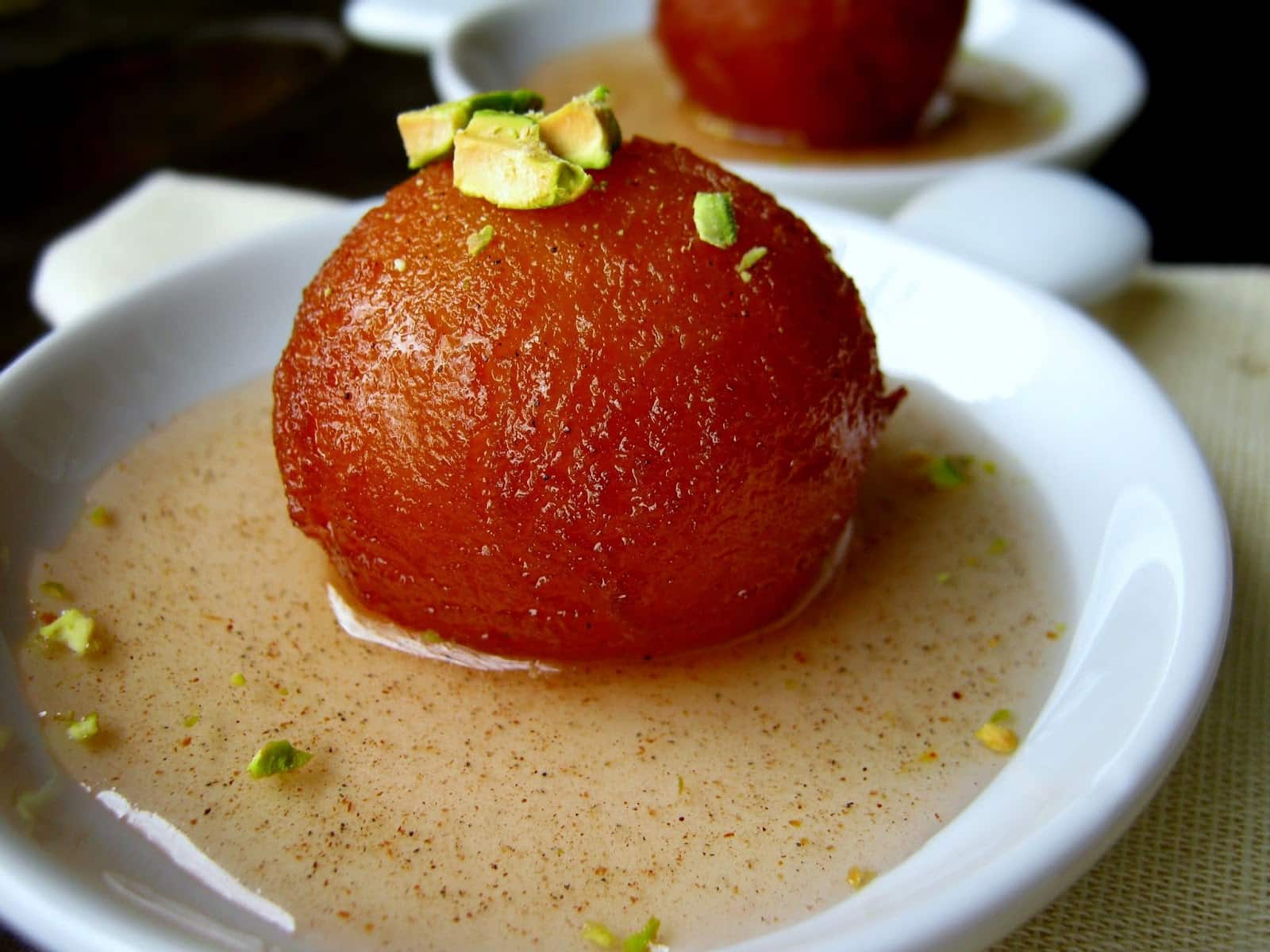
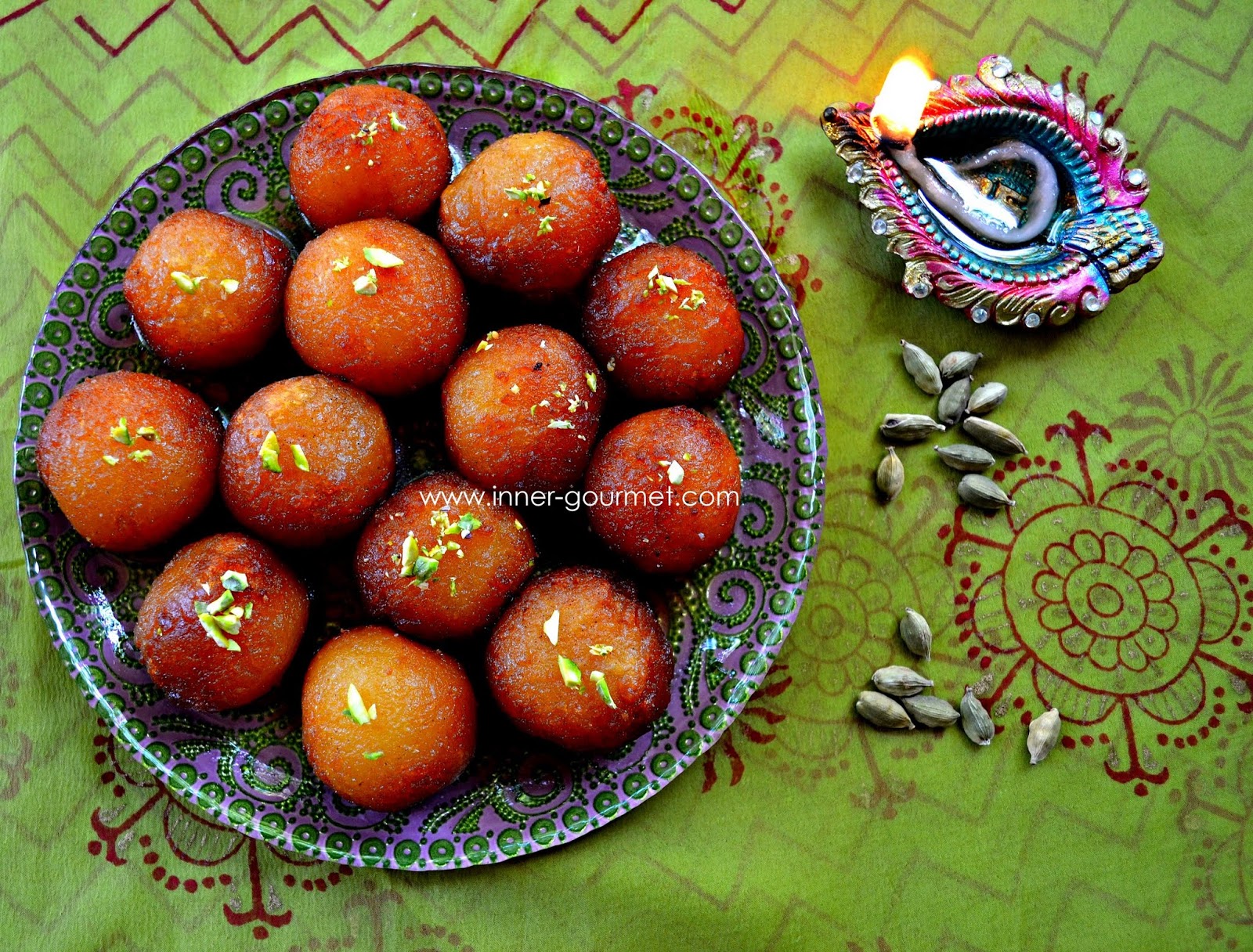
A friend of mine brought a few packs of saffron back for me from his trip to Dubai, I have kept them safely guarded in my pantry since it’s so expensive and hard to find in good quality. You’ll need a few strands for the syrup, but if you don’t have it, don’t sweat it, the syrup will still taste great. The saffron adds a nice color to the syrup as well as a background flavor. Boil syrup with ingredients for 12-15 minutes. Remove from heat.

Place all dry ingredients in a mixing bowl. Sift with a whisk. Add 1 tablespoon + 1 teaspoon of ghee (clarified butter), mix with your fingers until crumbly. Add milk and gently bring together to a sticky mixture form (step 6). At this point cover mixture with a damp paper towel for five minutes to allow the mixture to absorb the milk. After five minutes, gently knead to a soft and pliable dough.
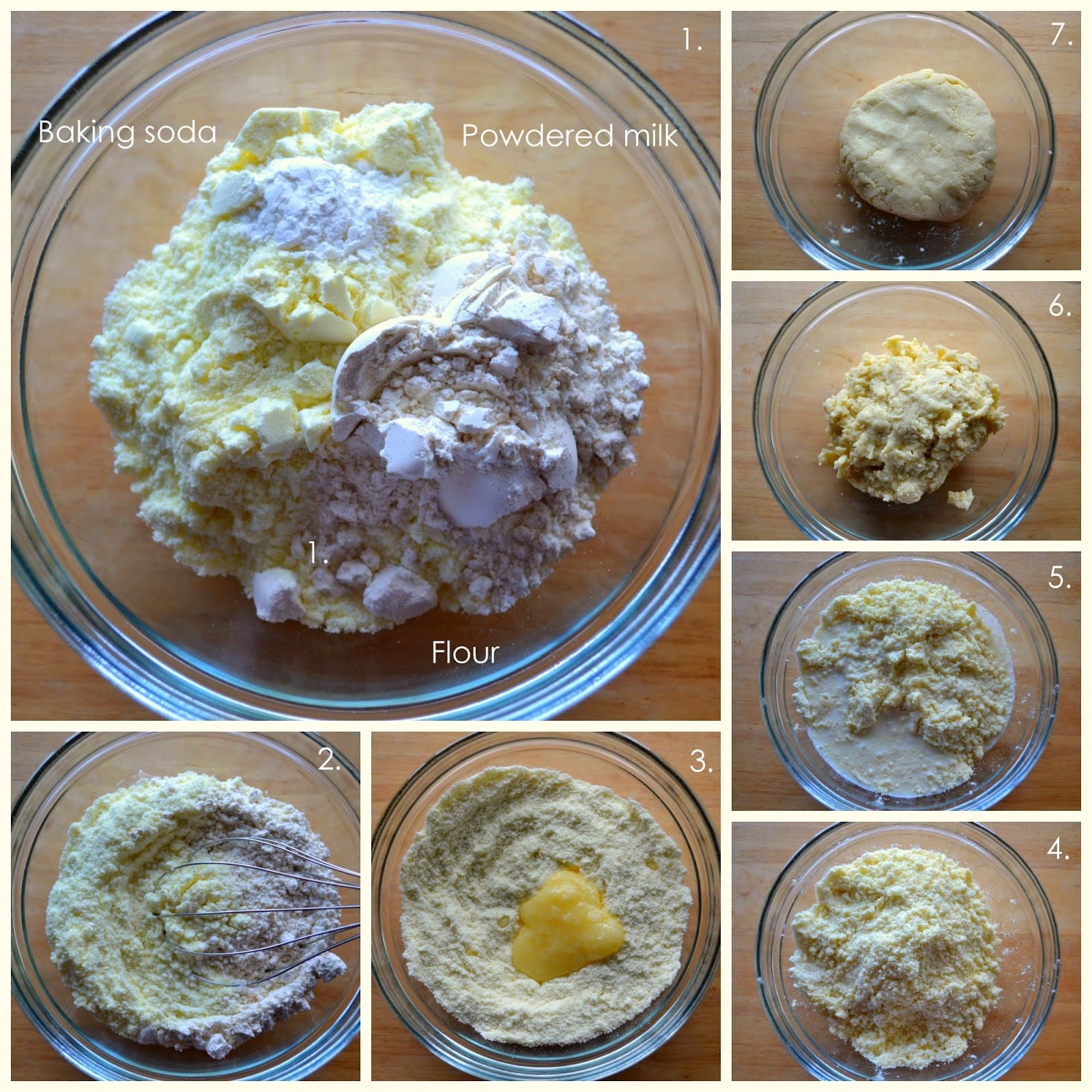
Roll immediately. A little less than 1 tablespoon should give the right size ball – about the size of a large grape. If you see any cracks, gently massage each piece in your palm then roll again. Cover balls with a damp paper towel to prevent a crust from forming while you get ready to fry.
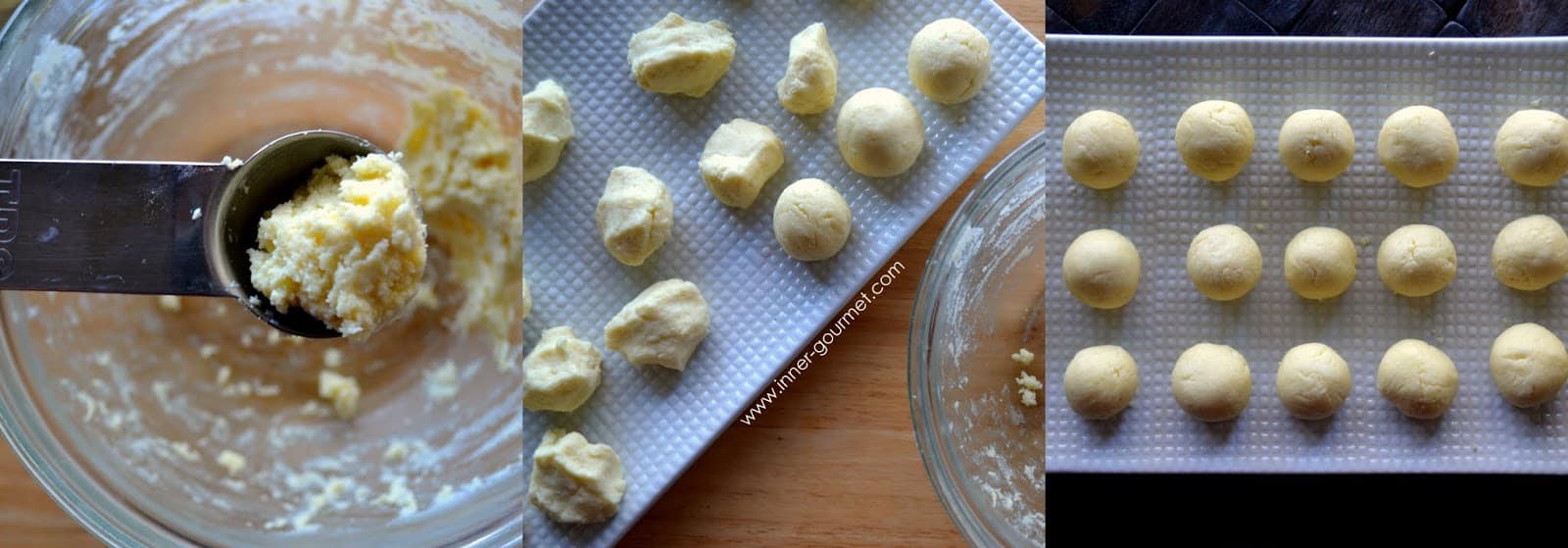
Fry jamuns on low-medium heat until golden brown. If the oil is too hot, the inside will be raw even though the outside will look perfect. The balls will not be smooth after removing from oil, don’t worry too much about that since they will smooth out once placed in the sugar syrup.
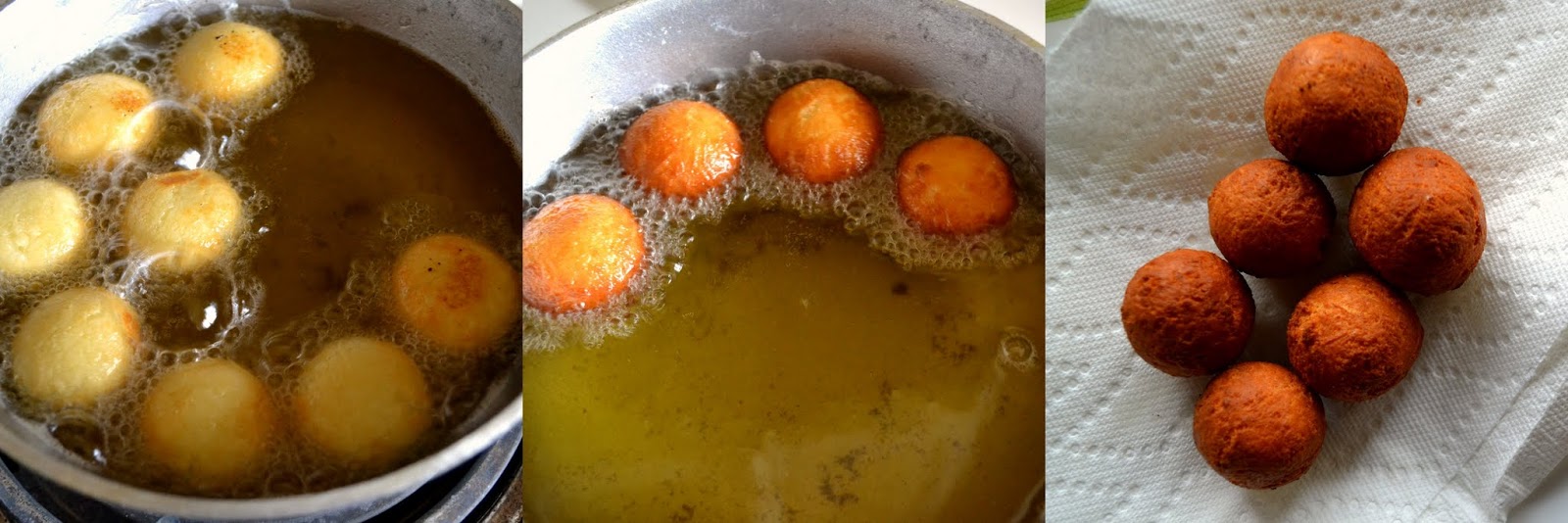
Add 1 tablespoon rose water to the syrup before adding jamuns. Drain jamuns for just 2-3 seconds then add right to the syrup. Syrup should still be hot or very warm, the jamuns will absorb the syrup better this way.
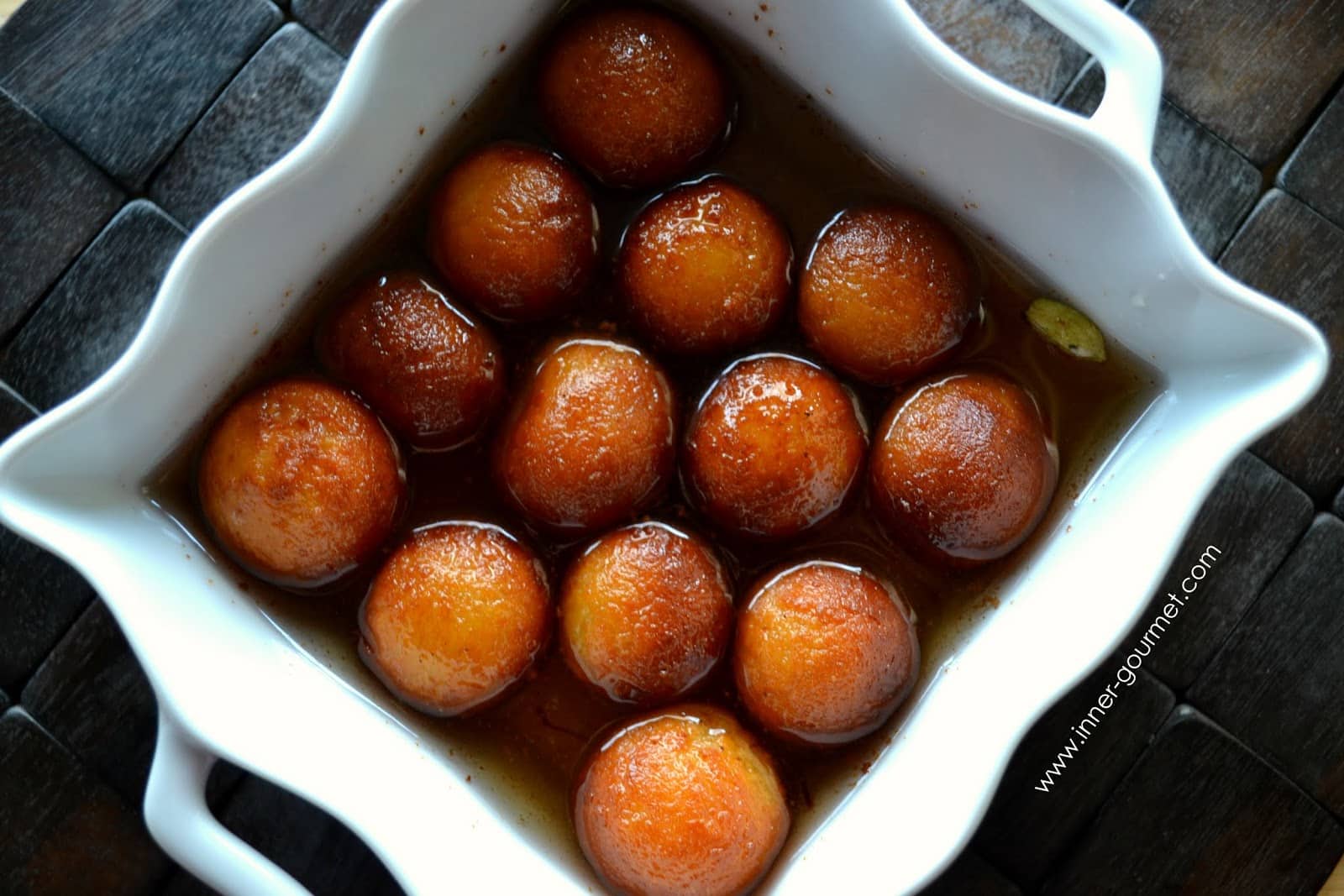
Serve hot or let jamuns come to room temperature after a few hours, drain syrup and refrigerate. I enjoy these cold so I opt for the latter.
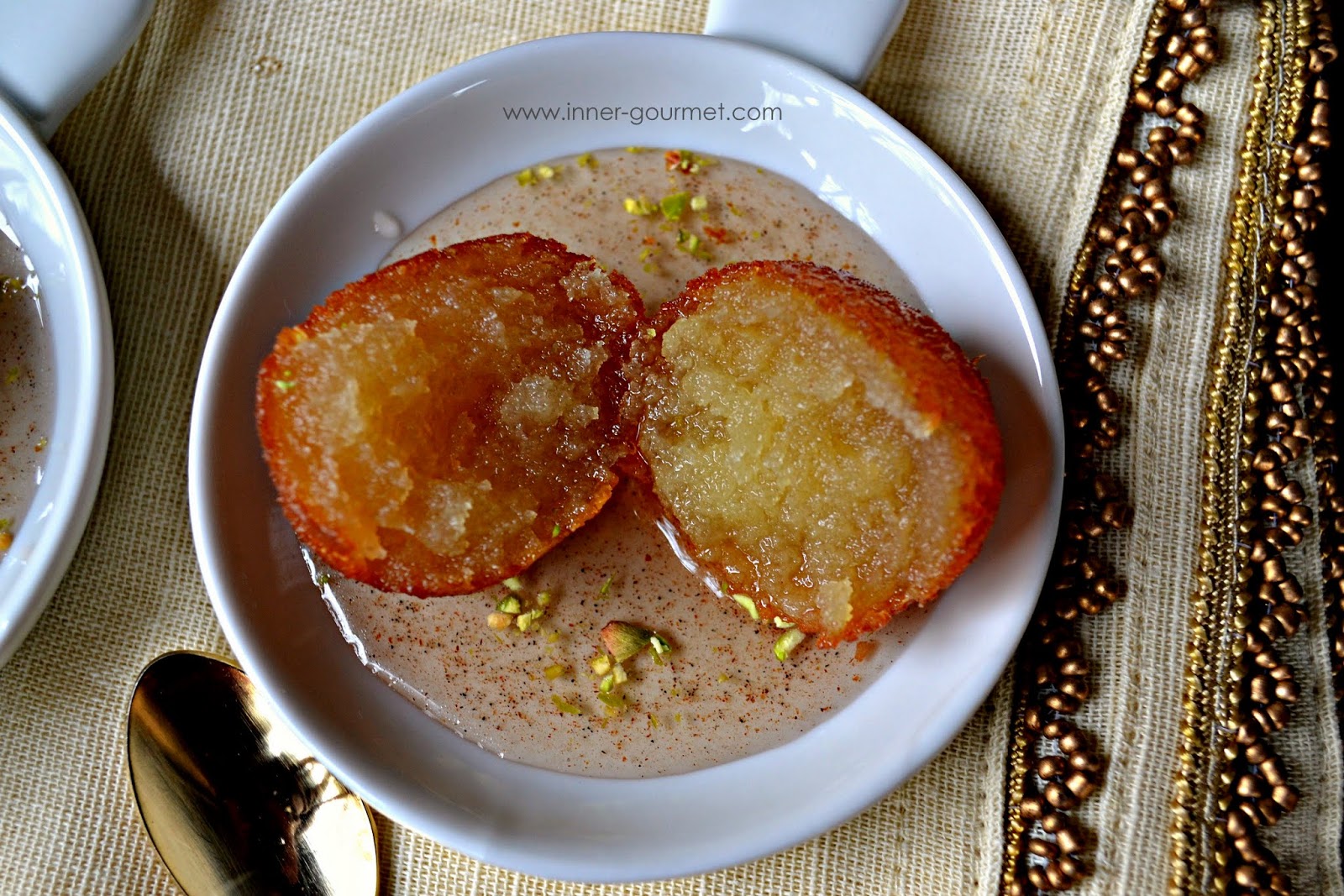
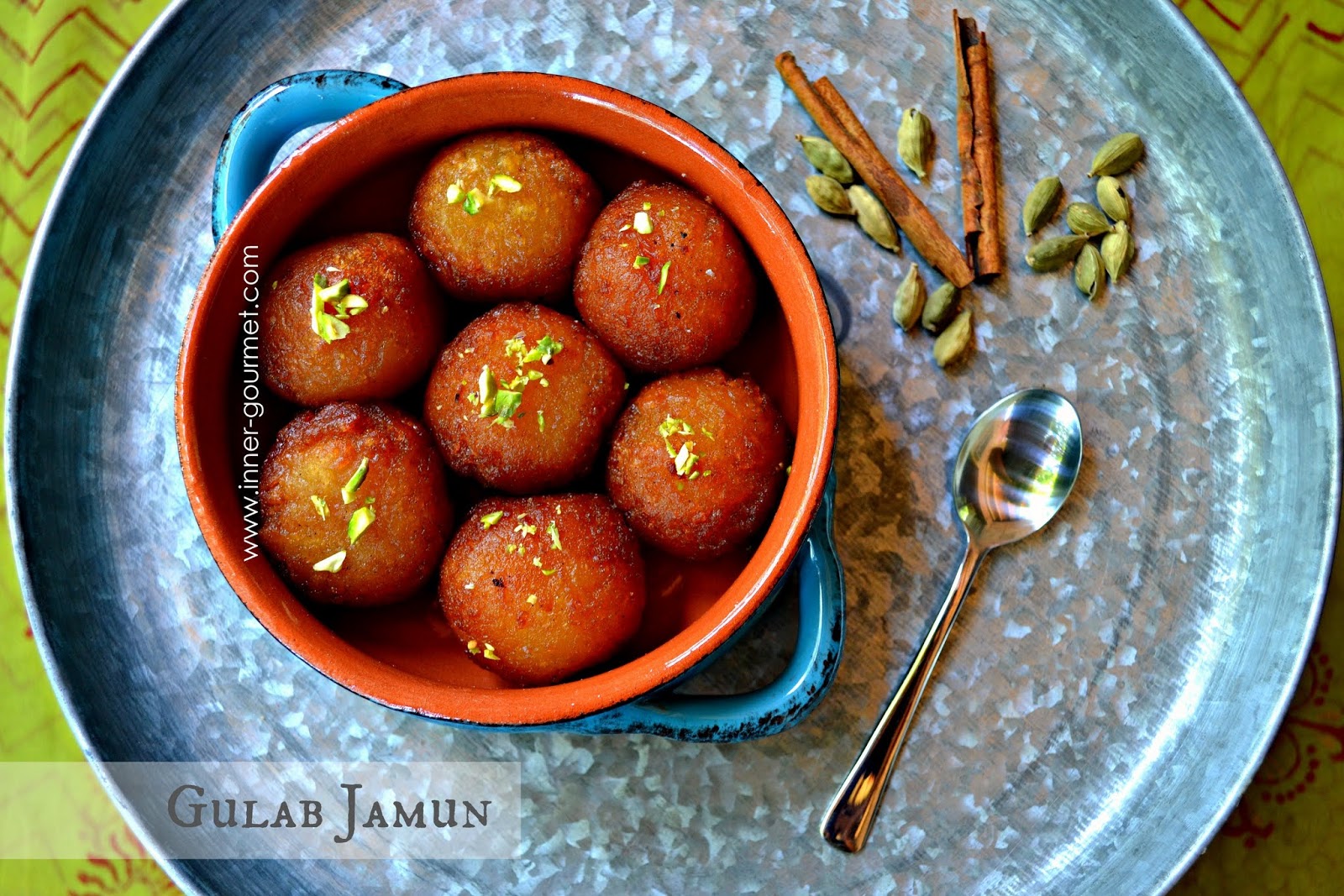
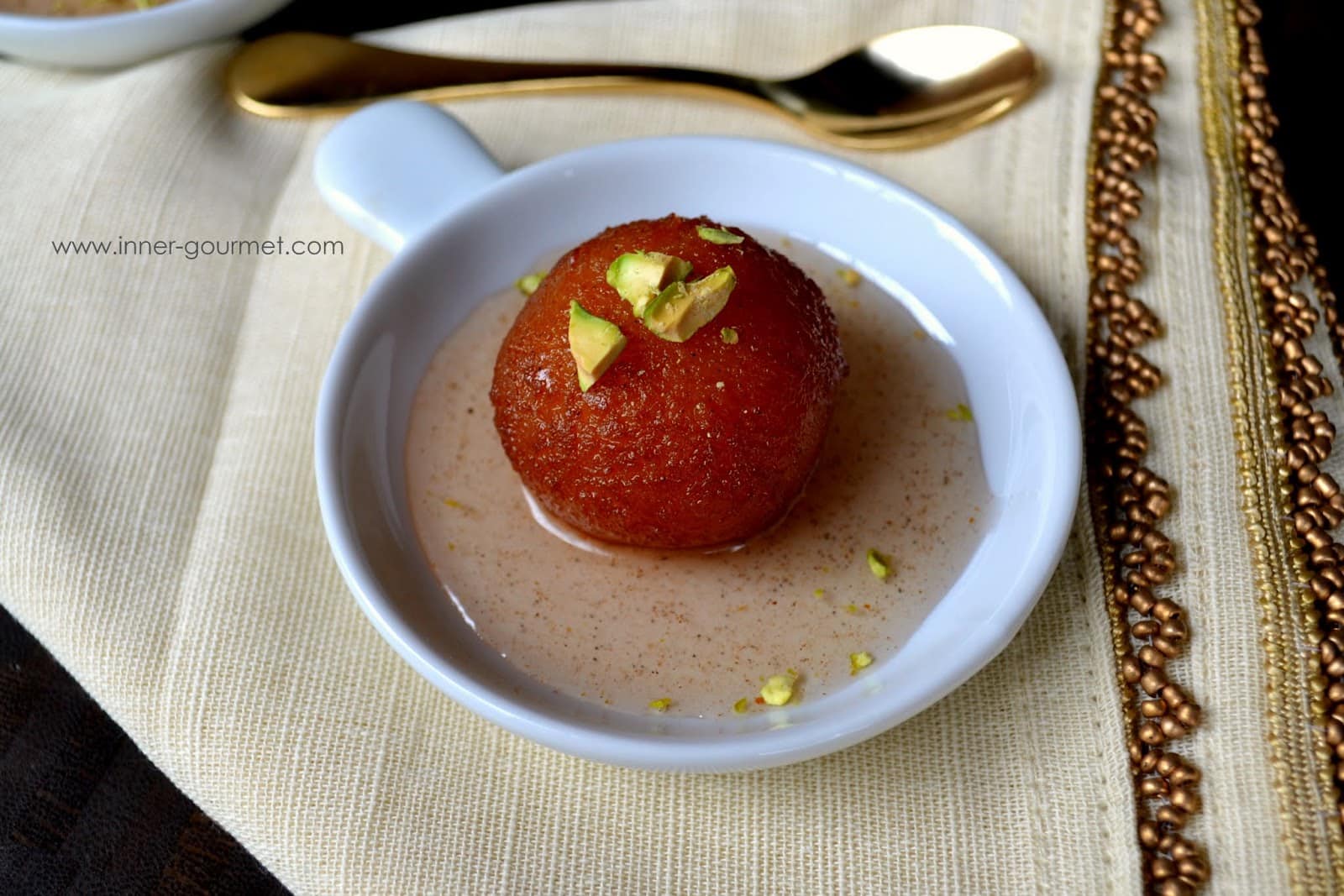
Mixing/rolling the dough
- If dough is too crumbly, add more milk until sticky. Once the dough becomes sticky, cover it with a damp paper towel for five minutes. During this time, the flour will absorb the milk. You'll notice when you feel the dough after the five minutes, it will not longer be very sticky, but more of a texture where you can slightly knead it. At this point, it is ready for rolling.
- Grease palms before rolling each jamun, it will help with keeping them smooth. If you see cracks, massage each piece a little- the heat from your palms will smooth out the cracks, then roll into a ball.
- Jamuns need to be quite small when first rolling them. Make them about the size of a large grape because they will triple in size; once when frying and again while soaking in the syrup.
- After rolling all the balls, cover completely with a damp paper towel to prevent them from drying out while your oil heats up. Fry right away.
Frying/Oil temperature
- From my past gulab jamun blunders, I feel frying them in ghee instead of oil gives a more authentic taste, but if you can't get your hands on enough ghee for frying, then vegetable or canola oil will work fine.
- Oil needs to be low-medium. They need to fry low and slow. Do a test one, if you start to see a lot of cracks and separation, turn up the heat slightly. If the ball rises to the top and browns within 10 seconds, turn the heat down. Or add a little cold oil to the pot to bring the temperature down. The ball should at first sink, float to the top and slowly turn golden brown, each batch should take quite a few minutes. Continue moving them around in the oil to ensure even browning.
- Add jamuns to hot/warm syrup right after draining for a few seconds. This keeps them from getting hard.
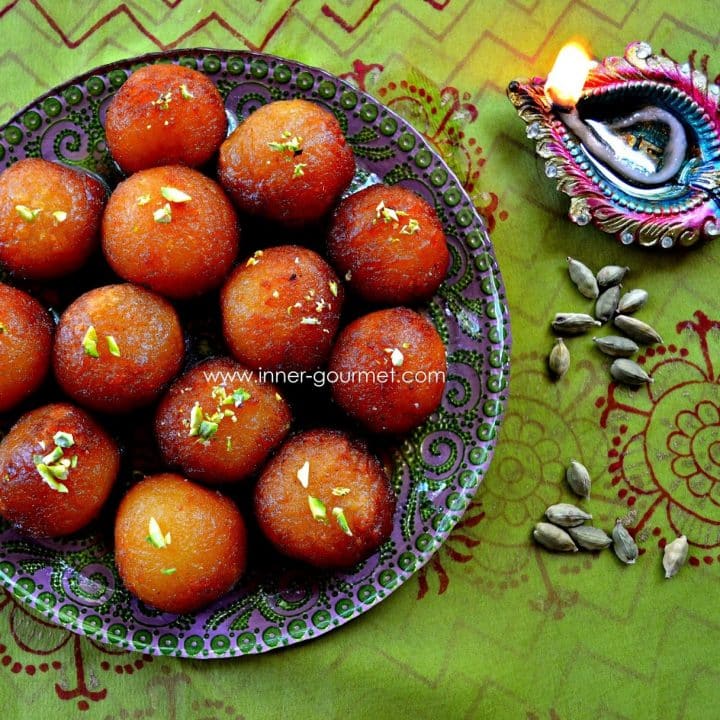
Gulab Jamun
Ingredients
- 1 cup powdered milk (full fat/whole milk)
- ½ cup all-purpose flour
- ½ teaspoon baking soda
- 1 tablespoon ghee + 1 teaspoon (clarified butter)
- ⅓ cup milk, warmed
Syrup
- 1 ½ cups granulated sugar
- 2 cups water
- dash of ground cinnamon or 1 small stick - optional
- ¼ teaspoon ground cardamom or 4 pods
- 3-4 saffron threads
- 1 tablespoon rose water
Instructions
- Make sugar syrup first. Combine all ingredients except rose water and bring to a low boil for 12-15 minutes. Remove from heat, stir in rose water, set aside.
- Heat ghee or oil for frying, keep the stove on the lowest setting. Increase heat later when ready to fry.
- Add powdered milk, flour, and baking soda to a bowl, whisk to mix together. Add ghee and mix until you achieve crumbles.
- Warm milk, add to mixture, and gently stir until sticky. Cover with a damp paper towel for 5 minutes. After 5 minutes, slightly knead to bring together to a smooth ball, do not add a lot of pressure. Dough should feel airy.
- Grease palms with oil or ghee, break off small pieces of dough and roll into small balls, the size of a large grape. After rolling all the balls, cover with a damp paper towel to prevent cracks and hardening until ready to fry.
- Increase heat on oil to low-medium. Fry jamuns until golden brown, drain for just a few seconds. Add to hot/very warm syrup right away. Let it sit in syrup for a few hours then refrigerate if desired. Be careful not to fry too dark otherwise the crust will be hard later on.


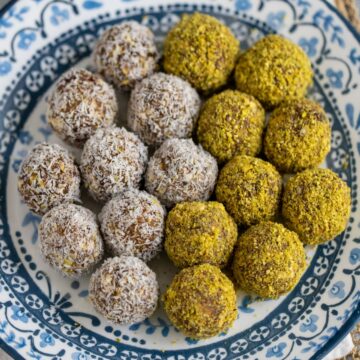
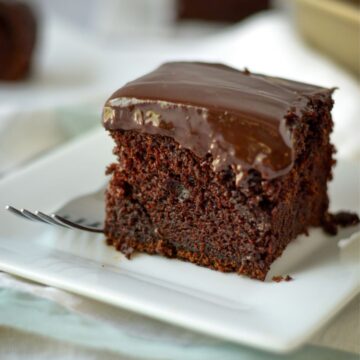
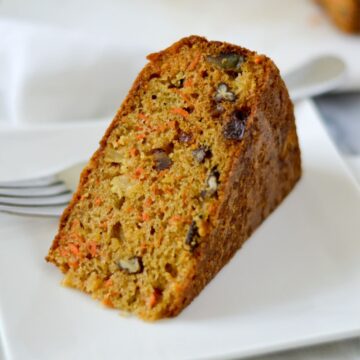
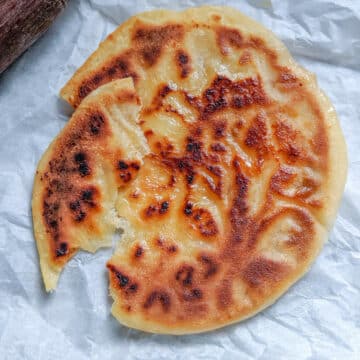
blueprintuniversity says
This was my favorite growing up as a child. Makes my mouth water!
Exploding Mary says
My favorite dessert at the Star of India here in Kenmore, NY. I have many versions of this recipe, but it's nice to see the method in use.
Peace! From another Western New Yorker
Nandanee says
This site is really beautiful. Useful and have your mouth watering lol. Please keep at it as I enjoyed all the little old tricks and tips. Good job
Reshma says
What can i use instead of rose water?
Alica says
Hi Reshma, you can leave it out if you don't have it. It won't taste too different without it.